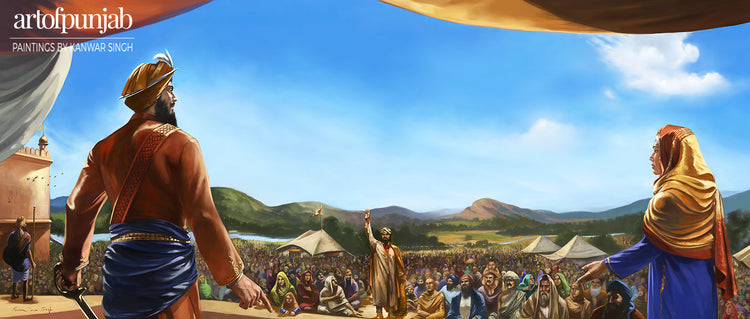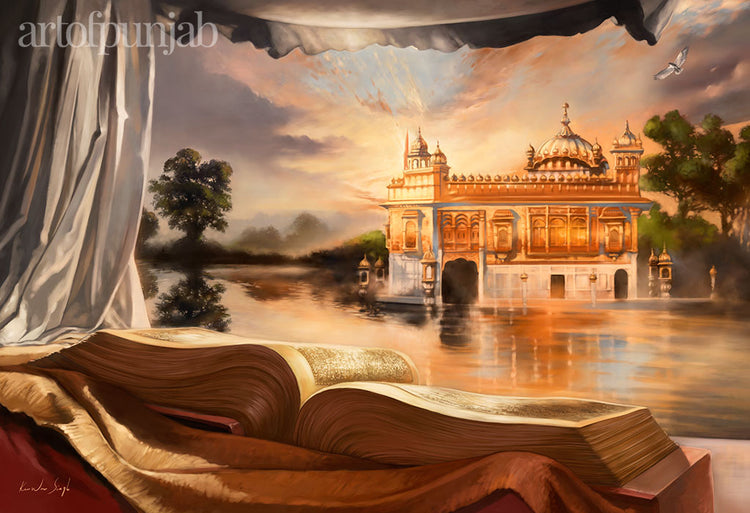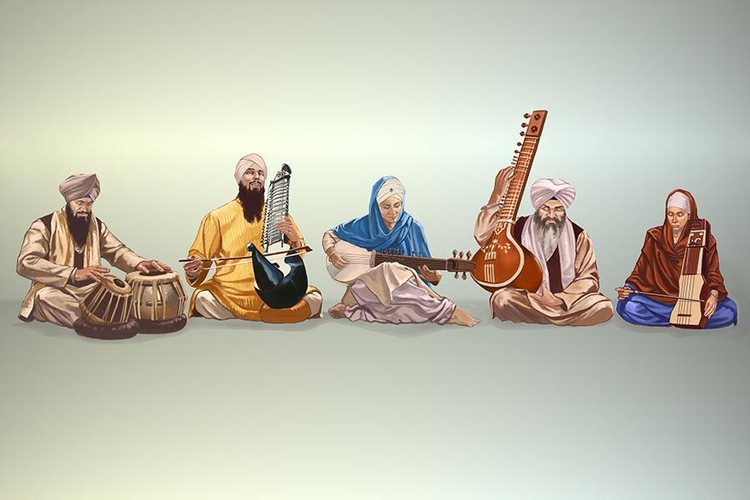-
Adi Granth 1604

Guru Arjan Dev Ji - Birth of the Adi Granth
Guru Arjan Dev Ji, the fifth in the line of Guru Nanak, began the compilation of the Guru Granth Sahib, which he called the Adi Granth – the “primal knot” which would forever secure the sanctity of the Sikh faith. The Guru sent out a call to all Sikhs far and wide to bring forth the poetry composed by the four Gurus. When all the volumes had been collected, he sat down with his scribe Bhai Gurdas and carefully selected the genuine works into the Holy Granth. With the completion of this momentous work, the Guru gave the world a gift so pure and essential, that it could transcend the boundaries of time and religion and exist beyond personality and human form. -
Vaisakhi 1699

Vaisakhi 1699 Birth of the Khalsa
Bhai Daya Ram of Lahore, Punjab, is the first to raise his hand when Guru Gobind Rai asks for a volunteer willing to give his life in service of humanity. Mata Sahib Kaur looks on at the crowd of thousands that has gathered from across the land in response to the Gurus call. Transformed through Amrit into Daya Singh, he became one of the first 5 Khalsa, the Punj Pyaarey (the beloved five). -
Formation of the Khalsa 1699

Guru Gobind Singh – Master and Disciple
The first Vaisakhi (April 13, 1699) saw the initiation of the first five Khalsa. Following their investiture, Guru Gobind Rai knelt before the Five Beloved Ones and asked to be initiated in turn as the sixth ‘saint-soldier’. The Amrit ceremony marked his transformation into Gobind Singh. Thenceforth, he was hailed: “Behold the Man non-pareil! Himself the Teacher, Himself the Disciple!” -
Sikhism 1469

Siri Guru Granth Sahib - The Abode of Nanak
The Siri Guru Granth Sahib is the embodiment of the spiritual revolution which was first ignited by Guru Nanak dev ji and the life breath of eight more Nanaks nurtured and fed this flame. Then in 1699 Guru Gobind Singh ji, the tenth Sikh Guru, transformed that flame into a wildfire of spiritual liberation through the creation of the Khalsa panth.
We look to Siri Guru Granth Sahib as our guide to connect with the One internally, see the One in all and fight inequality and injustice in every sphere of our lives as the Gurus themselves did. The image of Harimandir Sahib (Golden Temple) reflects the other half of the spiritual revolution because it represents the innumerable gurudwaras and abodes of Nanak which we create to enable the sadh sangat to come together, remember Guru Nanak’s message and carry on his revolution.





